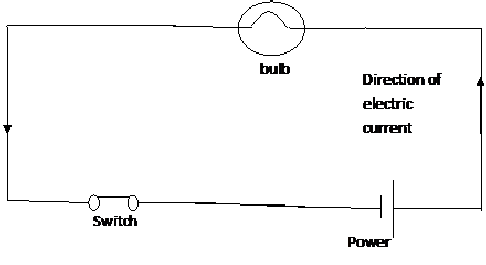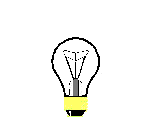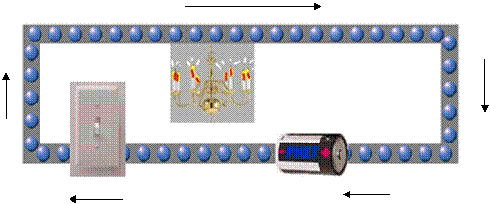The magnet is a very important object that have many applications in physics. The most important ones being the compass, motors and generators.
So what is a magnet?
It is simply a material that has a magnetic field around it. In physics a field is a region around an object that enable that object to exert a force at a distance. As a result due to its magnetic field, the magnet is able to exert a magnetic force on metallic objects as shown in fig 1 below, on other magnets or on electromagnets.
Fig 2
There are two main characteristics that a that a magnet must have.
1. Firstly the magnet must be made up of a magnetic material. A magnetic material must be a metal and it will be attracted to a magnet. However some metals are not attracted to a magnet and as a result are not magnetic materials. Aluminium, copper or gold objects for example cannot be turned into magnet and they are not attracted to a magnet. Magnetic material can be made into a magnet using an appropriate methods that we are going to see in a future post.
2. The magnet must have at least two poles. Fig 2 below shows a magnet with two poles. For the time being there has not been a magnet with one pole.
Fig 2 A magnet
As you can see in fig 2 the two sides of the two-pole magnet is labeled “N” and “S”. So how do you determine which side is the “N” and which side is the “S”.
In order to do that we suspend the magnet such that it is able to move freely as shown in fig 3 below.
A magnet that is suspended like that will always come to rest along a north-south axis. One part of the magnet will always point towards the north. Hence this side of the magnet is called the north-seeking pole or simply the north pole (N) . The other side of the magnet will always point towards the south. Hence this side of the magnet is called the south-seeking pole or simply the south pole(S).
Hence if any material has the two characteristics then it will be be a magnet.




![clip_image001[5] clip_image001[5]](http://lh4.ggpht.com/_MLcxcpYx4ws/S6o4ZlCj4zI/AAAAAAAAAho/nE5RS-Yi7Ss/clip_image0015_thumb1.gif?imgmax=800)
![clip_image001[5] clip_image001[5]](http://lh4.ggpht.com/_MLcxcpYx4ws/S6M0y0NthlI/AAAAAAAAAhQ/Hndj15eL0B0/clip_image0015_thumb1.gif?imgmax=800)
![clip_image001[1] clip_image001[1]](http://lh3.ggpht.com/_MLcxcpYx4ws/S6M1HRiGQaI/AAAAAAAAAhY/SMwpqygxv_U/clip_image0011_thumb3.gif?imgmax=800)







![clip_image001[6] clip_image001[6]](http://lh5.ggpht.com/_MLcxcpYx4ws/S5fSspmnEWI/AAAAAAAAAcs/qmu9Tt6_WtE/clip_image0016_thumb.gif?imgmax=800)
![clip_image001[4] clip_image001[4]](http://lh4.ggpht.com/_MLcxcpYx4ws/S5fSydxjelI/AAAAAAAAAc0/_fx7Hk9WXrI/clip_image0014_thumb.gif?imgmax=800)

![clip_image001[8] clip_image001[8]](http://lh6.ggpht.com/_MLcxcpYx4ws/S5fTMCImJiI/AAAAAAAAAdE/aOgFO2XGs8g/clip_image0018_thumb.gif?imgmax=800)


![clip_image001[5] clip_image001[5]](http://lh5.ggpht.com/_MLcxcpYx4ws/S5fUkCCxyyI/AAAAAAAAAeA/-R_qrLPztP4/clip_image0015_thumb.gif?imgmax=800)

![clip_image001[9] clip_image001[9]](http://lh3.ggpht.com/_MLcxcpYx4ws/S5dlpWva5QI/AAAAAAAAAbk/ar8CJnGvKnU/clip_image0019_thumb3.gif?imgmax=800)
